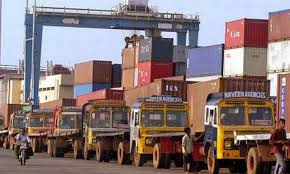The post-Covid-19 world has witnessed a shift in regional economic cooperation strategy from multilateral to bilateral cooperation agreements. In the past years India–Bangladesh relations have been on an upward swing. The two countries have made strides in bilateral relations as well as in aspects relating to sub-regional cooperation. Cross-border trade has increased manifold with improvement in connectivity networks.
Against this backdrop, India and Bangladesh have agreed to start formal negotiations for a Comprehensive Economic Partnership Agreement (CEPA). From trade to connectivity and from the socio-economic to the infrastructural arena, the agreement may bring forth a profound sense of cooperation and partnership Under this agreement, the two governments will recognize each other’s needs and requirements in the context of their developing economies and will explore all options, including economic and technical cooperation, for promoting, facilitating, expanding, and diversifying trade between the two countries based on equality and mutual benefit.
CEPA is an instrument for facilitating bilateral trade between India and Bangladesh. The main benefit of CEPA is, it doesn’t have to clear the threshold of WTO, but is a more comprehensive framework in nature. India had earlier signed CEPA with three countries, namely UAE, South Korea, and Japan. Bangladesh will be the fourth country it will be signed with. Thus, India already has enough experience in negotiating a CEPA deal. Bangladesh needs to skillfully negotiate with India for mutually beneficial investment opportunities. Bangladesh’s graduation from the least-developed country (LDC) category in 2026 will also be a factor in the negotiation on the CEPA. Bangladesh needs to emphasize getting the privileges of this agreement even after the graduation from LDC.
To identify the pros and cons of the deal, a joint feasibility study was also conducted. The result of the study showed that CEPA would boost Bangladesh’s export earnings by 190 percent and India’s by 188 percent. The same study also reveals that the gross domestic product (GDP) of the two countries is also expected to rise, by 1.72 percent and 0.03 percent respectively.
Bangladesh is a large market for India with increasing consumer power. So, there are manifold investment opportunities for India in Bangladesh. Indian foreign direct investment (FDI) in Bangladesh has started to rise since 2014. Annual average FDI from India stood at $90 million in the last decade. It is, however, quite low compared to FDI from China which stood at $245 million annually on average. So, Indian investment is still small compared to other developing partners of Bangladesh. CEPA may be helpful in boosting this connection.
This may benefit both countries under the Comprehensive Economic Partnership Agreement. Along with the investments, there will be prospects for employment opportunities in Bangladesh. So, the officials from both sides should start the groundwork of this agreement and exploit exclusive investment opportunities to facilitate bilateral trade as soon as possible.
First of all, Bangladesh is the second-largest exporter of ready-made garments in the world and India is a very large market, whereas India has cotton and Bangladesh can do yarns and garments. Joint investment between the two countries can be increased under this agreement. Bangladesh is already in advanced talks with Tata Group and Ashok Leyland. Tata group already has an assembly plant in Bangladesh. It can bring a large automotive investment for Bangladesh.
Other than these sectors, India can invest in the area of food, pharmaceuticals, leather and leather products, textile and apparel sector, agro-based Industries and farm machinery plants, automobiles, light engineering and electronics, ceramics, ICT sector, banking and financial services, telecommunications, and mega construction projects. Bangladesh is establishing three large Special Economic Zones for Indian entrepreneurs. In these special regions, Indian investors will be able to set up factories to cater to the supply chain needs of Bangladesh and the North-Eastern states of India, and to export to other parts of the world.
India has huge opportunities to generate power from renewable sources, such as solar and hydro. At present, India has renewable energy plants with the capacity to generate 151 GW, which accounts for around 39 percent of its total power generation. Also, India has set a target of expanding its capacity to 500 GW by 2030. Bangladesh can increase the share of renewable and green energy in its total consumption by either investing in India’s renewable energy projects to get electricity through cross-border lines, or importing electricity without investing in generation projects.
Not only that, the Bangladeshi market has a huge demand for the products of West Bengal due to the cultural similarity. But as of now, there had been no significant investments from West Bengal to facilitate any formal trade relations. Similarly, West Bengal has a large number of consumers who are highly interested in Bangladeshi goods (such as in the food and garments sectors). Bangladesh can be an exclusive area of investment especially for “West Bengal-centric” investors. On the contrary, Bangladesh can invest in India in the field of food and beverages, agro-processing, pharmaceuticals, plastics and rubber products, leather and leather products, textile and apparel, jute and jute products, cement, spinning mills, electronics and batteries, travel and tourism and ICT sectors.
If the abilities and sources of the two countries will be used for each other’s growth, this may benefit both countries under the Comprehensive Economic Partnership Agreement. Along with the investments, there will be prospects for employment opportunities in Bangladesh. So, the officials from both sides should start the groundwork of this agreement and exploit exclusive investment opportunities to facilitate bilateral trade as soon as possible.























